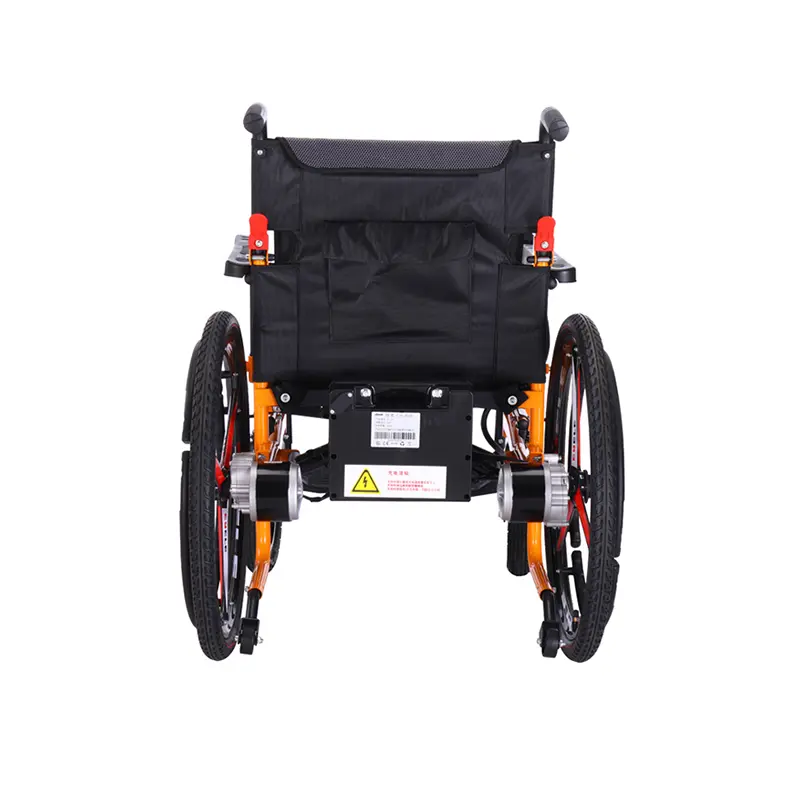A Complete Analysis of CE Certification Test Items for Electric Wheelchairs
With the intensification of the global aging population, the demand for electric wheelchairs is increasing. As one of the world’s largest markets for electric wheelchairs, the European Union has stringent safety and quality requirements for electric wheelchairs. The importance of CE certification, as the “passport” for electric wheelchairs to enter the EU market, is self-evident.
I. Overview of CE Certification
CE certification is a mandatory EU product safety certification, designed to ensure the safety, health, and environmental performance of products on the EU market. For electric wheelchairs, CE certification not only covers mechanical performance and electrical safety, but also electromagnetic compatibility, environmental adaptability, and other aspects. Products that pass CE certification can be freely circulated in EU member states, greatly expanding the product’s market reach.
II. Testing Standards for CE Certification of Electric Wheelchairs
CE certification for electric wheelchairs is primarily based on the following standards:
EN 12184:2014: Applicable to electric wheelchairs and electric scooters with a maximum speed not exceeding 15 km/h and a load capacity not exceeding 300 kg. EN 60601-1:2006/A1:2013: Basic safety and essential performance standards for medical electrical equipment.
EN 60601-1-2:2015: Electromagnetic interference test standard.
ISO 7176 series: Covers various test methods for wheelchairs.
III. Specific Test Items
(I) Mechanical Performance Testing
Mechanical performance testing is designed to ensure the stability and durability of electric wheelchairs under various usage conditions.
Static, impact, and fatigue strength testing: Evaluates the structural strength of the wheelchair to ensure it is not damaged by frequent impact and pressure during long-term use.
Seat and footrest testing: Checks the comfort and stability of the seat, as well as the firmness and durability of the footrest.
Dynamic stability testing: Simulates different road conditions to test the dynamic balance of the wheelchair.
Frame testing: Ensures that the wheelchair frame remains stable under various load conditions.
(II) Electrical Safety Testing
Electrical safety testing is a core component of the CE certification for electric wheelchairs, ensuring the product’s electrical system is safe and reliable during use. Electrical Grounding Test: Checks whether the electrical system’s grounding complies with standards to prevent leakage accidents.
Insulation Resistance Test: Evaluates the electrical system’s insulation performance to ensure safe use in harsh environments such as humidity.
Circuit Protection Test: Verifies whether the battery circuit has overcurrent protection to ensure it is not damaged under abnormal conditions.
(III) Electromagnetic Compatibility (EMC) Test
EMC testing evaluates the performance of the electric wheelchair in an electromagnetic environment to ensure it does not interfere with other equipment or be interfered with by other equipment.
Emission Test: Measures the electromagnetic radiation generated by the wheelchair during operation to ensure it complies with standards.
Immunity Test: Tests the wheelchair’s operational stability under external electromagnetic interference.
(IV) Functional Performance Test
Functional Performance Test ensures that all functions of the electric wheelchair operate normally and meet user needs.
Driving System Test: Evaluates the wheelchair’s control performance, including steering, acceleration, and deceleration.
Braking System Test: Tests the performance of the braking system to ensure it can stop quickly and safely in an emergency.
(V) Environmental Adaptability Test
Environmental Adaptability Test evaluates the performance of the electric wheelchair under different environmental conditions. Temperature and Humidity Testing: Tests the wheelchair’s adaptability to environments such as high and low temperatures and high humidity.
Weather Resistance Testing: Evaluates the wheelchair’s resistance to different climatic conditions when used outdoors.
(VI) Hazardous Substance Testing
Hazardous substance testing ensures that the electric wheelchair does not contain banned hazardous substances.
RoHS Testing: Tests the product for hazardous substances such as lead, mercury, and cadmium, ensuring compliance with environmental regulations.
(VII) Battery and Charger Testing
Battery and charger safety is crucial for electric wheelchairs.
Battery Charger Testing: Includes functional tests such as charging indication, charging efficiency, and overcharge protection.
Battery Compatibility Testing: Ensures that the battery is compatible with the wheelchair’s electrical system.
IV. CE Certification Process
Prepare technical documents: Include design drawings, material information, and production process instructions.
Submit application: Select a certification body and submit technical documents and test reports.
Document Review: The certification body reviews the technical documents to ensure compliance with standards.
Testing: The certification body conducts on-site testing to verify product compliance with standards.
Obtaining CE Certification: After passing the review, the product can be marked with the CE mark. Ongoing Compliance: Regular audits by certification bodies ensure that products continue to meet certification requirements.
V. How Global Wholesale Buyers Choose Compliant Products
For global wholesale buyers, selecting CE-certified electric wheelchairs is crucial. Buyers should focus on the following:
Certification Mark: Ensure the product is marked with the CE mark.
Technical Documents: Require suppliers to provide complete CE certification technical documents.
Test Reports: Review the product’s test reports to confirm compliance with relevant standards.
Supplier Qualifications: Select reputable and qualified suppliers.
VI. Conclusion
CE certification for electric wheelchairs involves multiple testing items, ranging from mechanical performance to electrical safety, from electromagnetic compatibility to environmental adaptability. Each test is designed to ensure product safety and reliability.
Post time: Aug-06-2025


